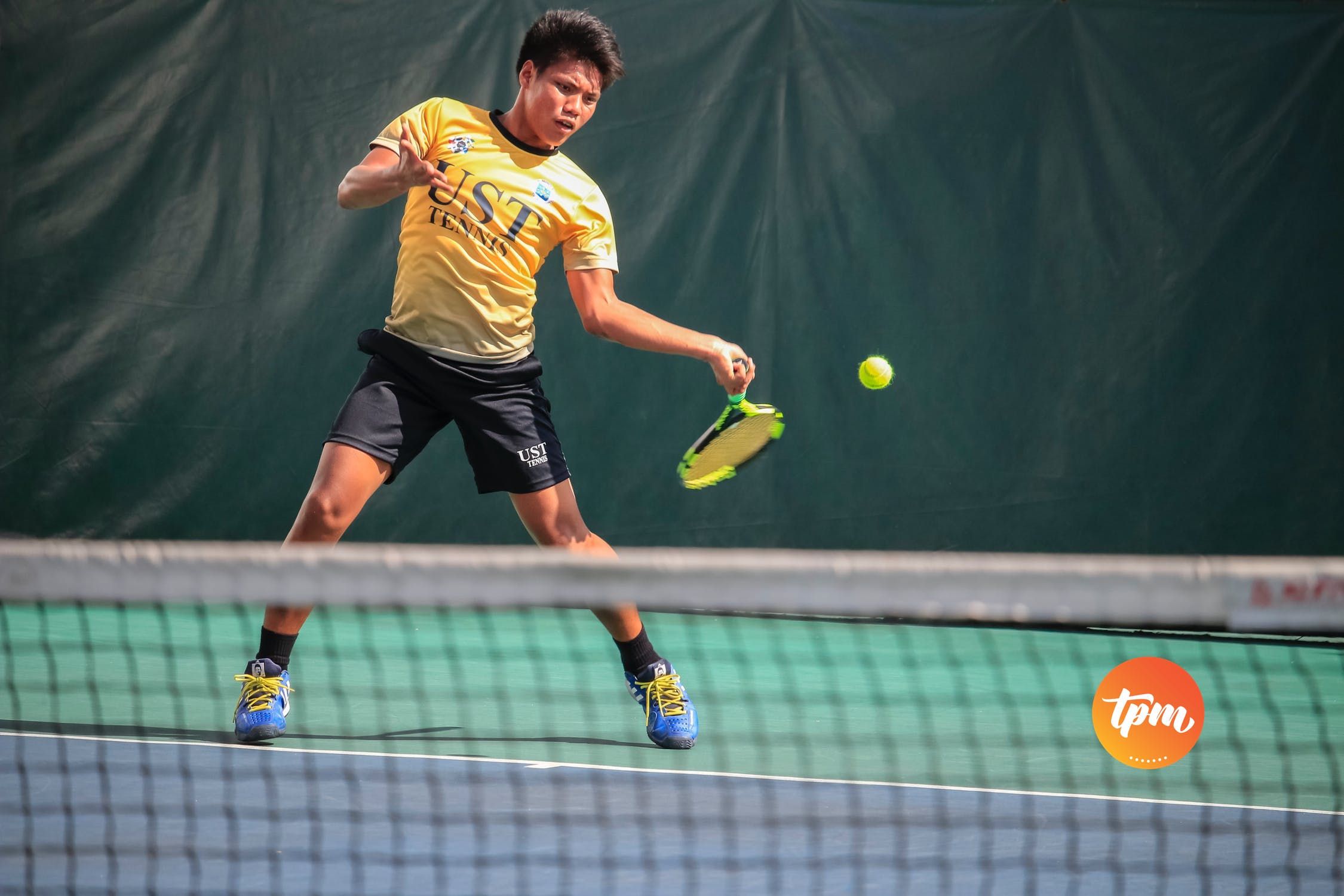
The Role of the Rotator Cuff as a Dynamic Decelerator in the Tennis Serve
The anatomy of the Rotator Cuff
The rotator cuff is a term given to a group of four specific muscles and tendons that act to provide strength and stability of the shoulder joint during multi-directional movement and loading of the shoulder joint. These muscles also act to maintain the head of the upper arm bone (humerus) in the shoulder socket during dynamic shoulder movements.
The rotator cuff muscles include:
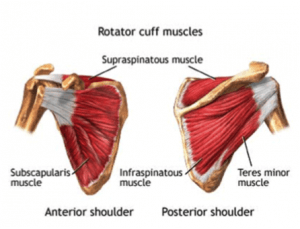
-
Supraspinatus
-
Infraspinatus
-
Teres minor
-
Subscapularis
Due to the high demands the tennis serve places on the shoulder complex, rotator cuff injuries are among the most common injuries for the competitive tennis player. These injuries frequently occur due overuse of the rotator cuff during the service motion, where the rotator cuff is subjected to high eccentric loads when decelerating the arm following ball impact.
These eccentric contractions of the rotator cuff following ball impact are of vital importance in the shoulder as they assist in maintaining the stability required to both prevent injury and enhance performance. During the tennis serve the upper arm is initially elevated approximately 90-100 degrees relative to the body. From this position, large forces are produced by the internal rotator muscles of the shoulder such as the pectoral muscles and rotator cuff to accelerate the arm and racquet head upwards and forwards toward an explosive ball impact.
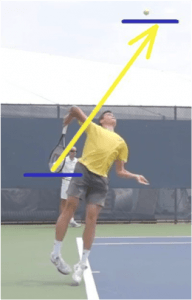
Serve preparation phase prior to ball impact
Immediately following ball impact, the posterior rotator cuff muscles have to maximally contract to rapidly decelerate the arm as the arm continues to follow-through, whilst also being responsible for maintaining shoulder joint stability. Efficient deceleration is vital for preventing rotator cuff injury, as the inability to dissipate these forces can cause overload and overuse of the rotator cuff.
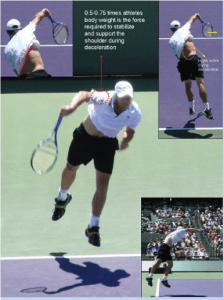
Deceleration phase following ball impact
Therefore, in order to prevent injury it is essential for the competitive tennis player to maintain sufficient rotator cuff strength, range of motion and dynamic stability of the shoulder joint. To achieve this, tennis specific strengthening exercises should be undertaken to either reduce injury risk, or rehabilitate following an injury to the rotator cuff.
Pictured below, Physiotherapist Lachlan demonstrates three specific tennis strengthening progressions to improve the rotator cuffs capacity to decelerate the arm following ball impact for the tennis serve.
Exercise progression 1: Banded external rotation at neutral shoulder elevation
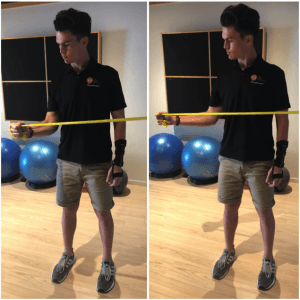
Exercise 1: Banded external rotation at neutral shoulder elevation
Exercise Progression 2: Banded external rotation at 90 degrees shoulder elevation
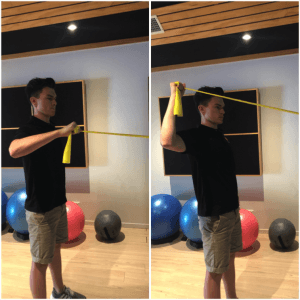 Exercise 2: Banded external rotation at 90 degrees shoulder elevation
Exercise 2: Banded external rotation at 90 degrees shoulder elevation
Exercise Progression 3: Swiss Ball wall bounces at 90 degrees abduction
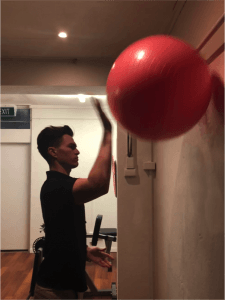
Exercise 3: Swiss Ball wall bounces at 90 degrees abduction
Whilst these exercises pictured above are great for improving the strength of the rotator cuff muscles in preparation for tennis serve, it is essential that if you are experiencing shoulder pain that you seek advice from your Physiotherapist at The Physio Movement for a comprehensive assessment and treatment plan to allow you to return to sport pain free.
For any further questions relating to this article, Lachlan can be contacted at The Physio Movement


